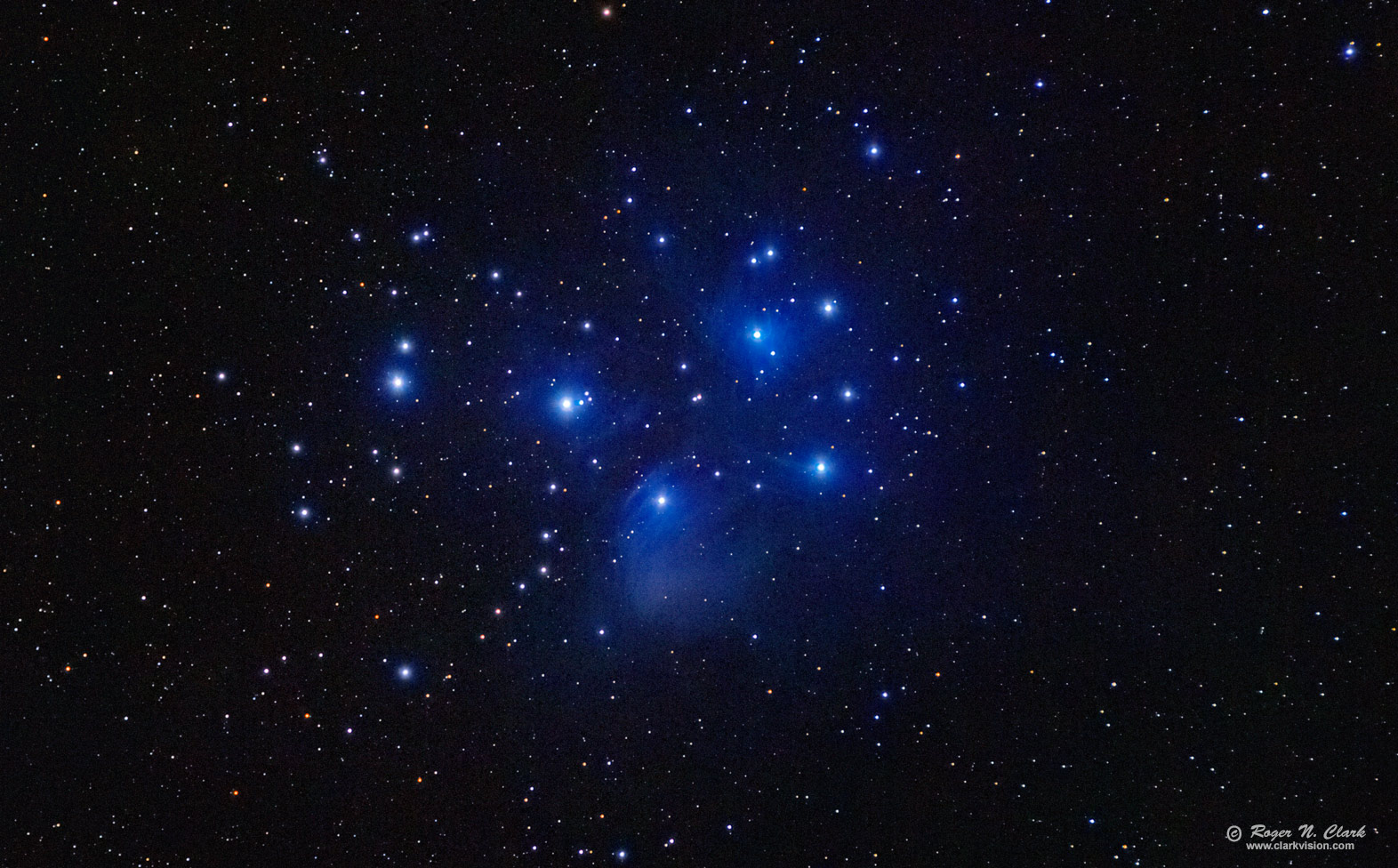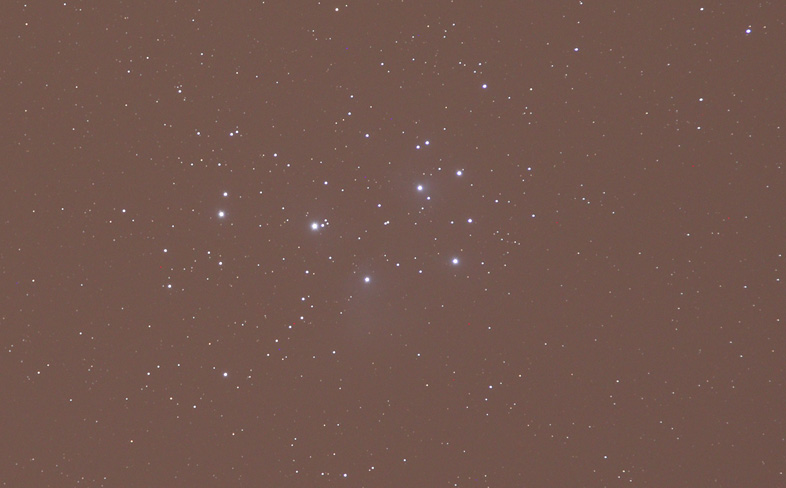| Home | Galleries | Articles | Reviews | Best Gear | New | About | Contact | Gallery Index | Previous |
Next |

| Home | Galleries | Articles | Reviews | Best Gear | New | About | Contact | Gallery Index | Previous |
Next |

The Pleiades star cluster, also known as the Seven Sisters is immersed in nebulosity due to scattered starlight. This image was made from the Denver, Colorado metro area, a region of high light pollution. An image with the light pollution is shown below. The light pollution was subtracted in post processing to reveal the beautiful blue nebulosity and many faint and colorful stars. The blue color is due to Rayleigh scattering by dust particle smaller than the wavelength of visible light. Rayleigh scattering is the reason our daytime sky is blue: scattering off of air molecules.
Technical. Canon 7D Mark II 20 megapixel digital camera and Canon EF 200mm f/2.8L II USM Lens plus a 1.4x teleconverter, giving 230 mm at f/4. (I apparently changed the zoom point during focusing--I intended to be at 280 mm.) A total of 32 one-minute exposures at ISO 1600 were added (32 minutes total exposure). No dark frame subtraction, no flat fields, no noise reduction. Tracking with an astrotrac. Crop to central 1/3 of the image.
Post processing: stretched with rnc-color-stretch. Also see Astrophotography Image Processing Basic Work Flow.
Modern DSLRs like the Canon 7D Mark II include on sensor dark current suppression and low fixed pattern noise at ISOs around 1600 and higher, making no need for dark frame subtraction. Modern raw converters correct for light fall-off and also correct for hot/dead/stuck pixels. This makes processing low light images easy: simply align and average. Compare this image to the M45 made with a 7D Mark 1 with almost the same exposure time and almost the same sky conditions.
The Exposure Factors, CEF, CEFA are measures of the relative amounts of light received from a subject. It can be used to fairly compare wildly different lens/telescope apertures and exposure times. For this image:
Light pollution:

The surface brightness of the Pleiades nebulosity is very low (see surface brightness of the nebulae in M45 ).
To learn how to obtain stunning images like this, please visit my Extensive Articles on Photography .
See my review of the Canon 7D Mark II and why it is so good for astrophotography: Canon 7D Mark II sensor analysis.
Keywords to this image = astrophoto-1 star_cluster nebula Messier night low-light digital_astro canon_7d2 rnc-color-stretch
Image ID: m45.redzonesky.c11.25.2016.0J6A0597-630dss.b-rs.e-0.5x-1572s.jpg
| Home | Galleries | Articles | Reviews | Best Gear | Science | New | About | Contact |
Last updated November 03, 2025